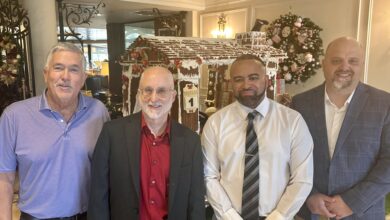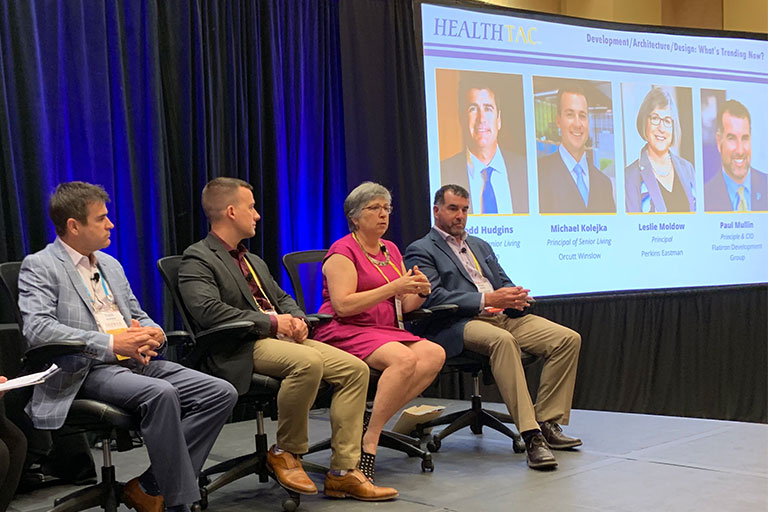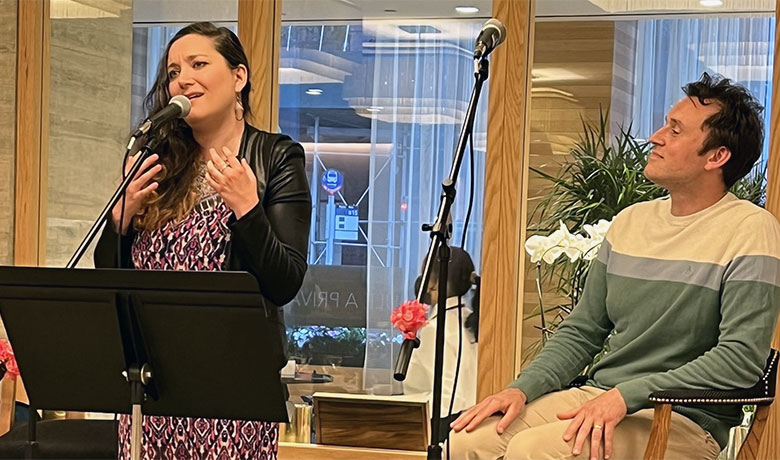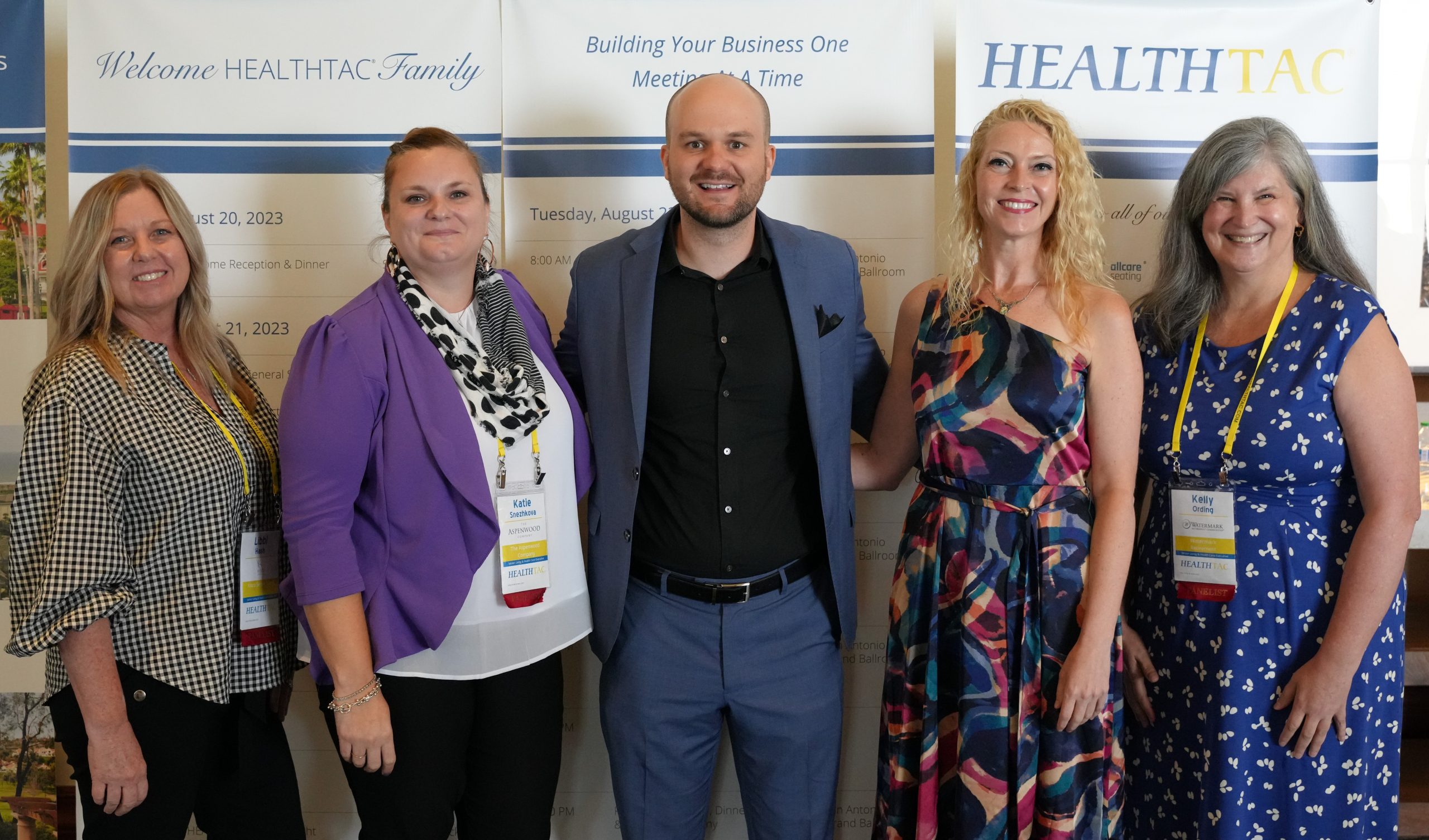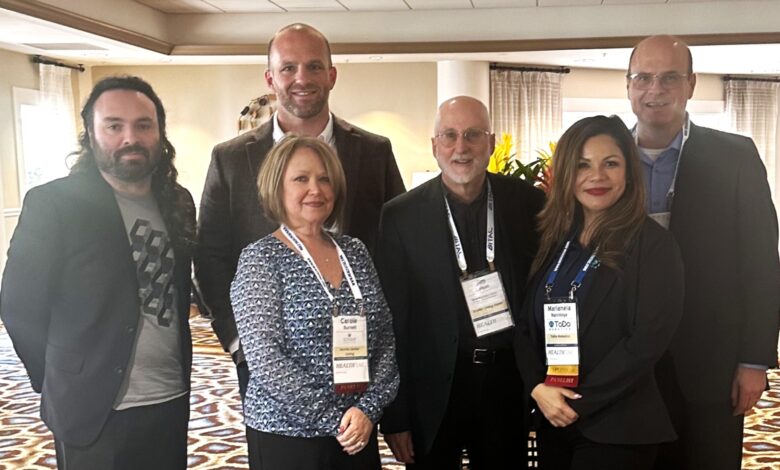
HEALTHTAC East 2025 Panel: Technology: What We Like and What We Need, Part 1
By Jim Nelson | April 4, 2025
AMELIA ISLAND, FL — In conjunction with our sister company, we recently held our annual east coast HEALTHTAC executive event in this city. With the Atlantic shore as our backdrop, we hosted senior living leaders from all over the nation for two and a half days of learning, networking, and fun.
One of our panels discussed technology from the perspective of what’s working and what’s not working. During the onstage panel we refrained from mentioning brand names out of respect for all of our tech sponsors in the room. For clarity in this article, when applicable we’ve included brand names in brackets.
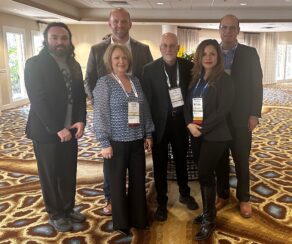
On the panel were Carole Burnell, VP of operations for Sonida Senior Living; Charley Sankovich, VP of information technology at Mather; Tate Stewart, the SVP of operations for Thrive Senior Living; Marianela Nanninga, the CEO at ToDo Robotics; and David Sawyer, TSOLife’s founder/CEO.
There were effectively just two questions for the panelists: What tech are you currently loving and what do you need that isn’t currently available?
“Our company is always trying to put together a suite of software to be the best in class,” began Burnell, “and identify technology that is easy to use for our operators, can give them actionable items to focus on without having to go to 19 different places or spend three hours doing research. What we’re really loving is [Sage] where we can see which residents are on their call pendants the most, what times of day they’re calling, why they’re calling, who’s responding to those calls, how quickly they’re responding. It’s really helping us navigate labor, because we can see what times of day people are busiest, or we’re getting the most calls, things like that. That’s been super helpful. We can also recognize our team members and keep people that are responding the most and the quickest, and call them out, and focus on operational excellence.
“We also have a fall detection technology [SafelyYou] that we’re really liking,” she continued. “I think the greatest thing about that is being able to watch what happened pre-fall, what caused the fall, and most importantly, I think, how our team members respond to the fall. It gives us a lot of opportunities for training and where we need to do better lifting and transferring and coaching.
“And lastly,” she added, “we have implemented a visitor management system [Accushield]. What I truly love is being able to pull a report to see who’s not getting any visitors and give those residents some extra love and attention that they don’t normally get from friends or family.”
“I’m becoming more proficient in AI,” Nanninga answered next. “I think that the applications and the world that is opening besides the regular ChatGPT or Gemini, is incredible. I actually encourage all of you to experiment and try to play in that area; there are so many new programs that will help you in productivity and improved efficiency in operations, from doing very fast presentations on PowerPoint to reading the summaries of books. The idea of prompting engineering, meaning how to talk with the AI to get the results that you want, is really an art that we will have to start to learn and master if we want to take advantage of this technology.
“Regarding technology applicable for commercial applications,” Nanninga continued, “the use of AI and the new generations of IoT (Internet of Things) devices and robotics and automation devices in the industry, is actually overwhelming. I think that everybody working right now in robotics and automation, we have to present ourselves as educators, because most people don’t have an idea what this kind of device does, or [they] have a very limited idea. And worse, you [hear], ‘Optimus is coming out,’ and everybody [says], ‘Oh, my god, robots are taking over.’ No, we are not there yet. But yes, there is the new generation of automations, of robotics, that is coming into the market. It is there to facilitate our life; it’s not to fear, but we have to get acquainted. Get information, understand what the robot actually does, and what are the limitations and the possibilities that it brings.”
“At Mather Tysons, we wanted to be forward thinking,” Sankovich offered, “so all 293 independent living units, as well as the assisted living, have ‘smart homes.’ Residents have really adopted that well. It took some training to teach them how to engage with the platform, to open their blinds and to turn on lights and do all the functions that smart homes do. Today, we have more mobile devices in our communities than workstations and laptops; we wanted to have applications that adhered to that, so we have an application for residents to be able to register for events and request services, and for the staff to be able to accept those reservations and to respond to the requests. Mobility is an important part of our community at The Mather Tysons and allowing both staff and residents to be mobile.”
“We’re definitely in a really interesting spot in technology and senior living,” said Sawyer. “To say that we’re kind of on the dawn of a new revolution of technology definitely isn’t underselling what’s happening right now. The systems that I really like are ones that are open integrations with open APIs (Application Programming Interfaces), allowing us to pull data and share it amongst other tech so we can all be on the same ecosystem. We can get the data from a third party, it can feed into our algorithms, or we can send data we have, feed them to their algorithms, so that all of our systems can get better over time.
“What we have is definitely some legacy software vendors that haven’t invested in those APIs,” Sawyer said as he pivoted into his thoughts on what we need from tech that we don’t currently have. “We’re still having to pull flat files to be able to get any level of data and that’s slowing down the innovation of senior living. What’s happening, operators, is you are going to need to start feeding all that stuff into a data link instead, and then you are going to have to invest time, energy, and effort into being able to pool resources together to be able to retrieve your own data. My viewpoint right now is with AI, us being able to go do these personalization models, all these tech companies need to invest in the databases that we have so that we can all sync, we can all share, and then we can all be able to take advantage of the tools that are out there, as opposed to having these static databases that no one can get in and out of. Because it’s going to limit the industry significantly on the advancements we can make.”
In part 2 of this article, we’ll learn more about what the operators are looking for from technology that they aren’t seeing yet.

